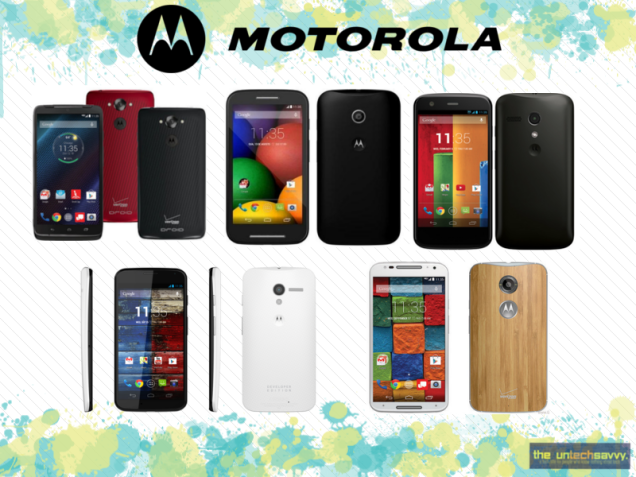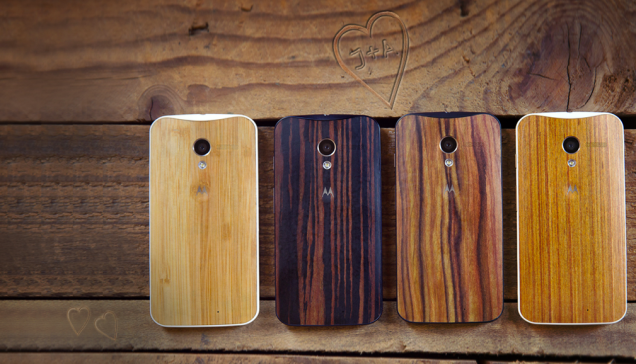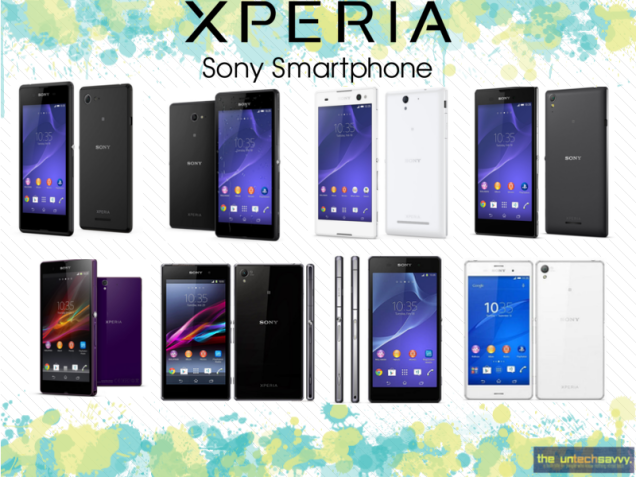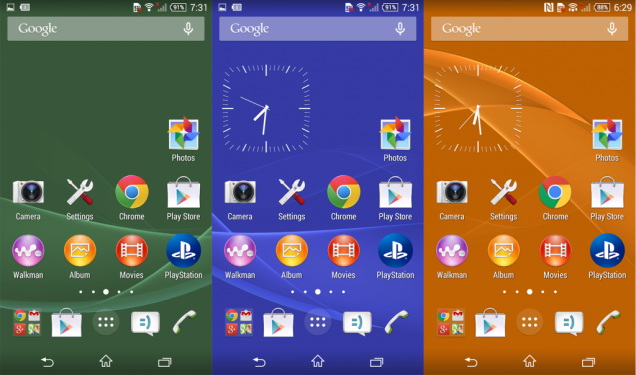*Sorry for the recent delay. Both me and my graphics designer were swamped with schoolwork*
To continue where we left off last week, lets look at the next biggest names in the Android atmosphere. Two companies famous for everything except their smartphones. Introducing Motorola and Sony

http://cdn.arstechnica.net/wp-content/uploads/2013/09/Moto-X-Dev-Edition-GSM-version1.png
http://www.droid-life.com/wp-content/uploads/2014/02/Screen-Shot-2014-02-14-at-2.32.56-PM.png
http://cdn1.xda-developers.com/devdb/deviceForum/screenshots/3713/20141030T041804.jpg
http://drop.ndtv.com/TECH/product_database/images/5132014122216PM_635_motorola_moto_e.jpeg
http://cdn1.xda-developers.com/devdb/deviceForum/screenshots/2684/20140606T015152.jpg
Motorola
Motorola was Nokia’s biggest competitor back in the days before smartphones. They revolutionized the industry by introducing the “flip” phone. A clam shell device that housed separate modules for the screen and keypad. They also released a set of early smartphones with the RAZR line, however this flopped with consumers. This had caused it to fall out of favor with normal consumers until the Chinese company Lenovo (a company we will feature in a later installment of this series) bought the struggling firm. Now Moto has regained a decent market share and a respectable line of smartphones, respectable enough to gain Google’s attention to create last years version of its Nexus Smartphones (another line that will be featured in this series).
Motoroloa has gained popularity with a niche market of power users as the phones come with a lightly skinned version of Android. Unlike the previous three OEMs I’ve listed in this series, Motorola phones come with the least modified version of Android. As the company doesn’t tinker too much with the software, it can release an update almost as fast as when Google releases it. This is unlike HTC, Samsung, and LG who took 3 months to make their version of the latest Android version, Android 5.0 Lollipop, made widely available.
Unlike most OEMs, Motorola doesn’t release many types of phones, in fact they only release 3. The Moto X, the Moto G, and the Moto E. They represent the three different price ranges, flagship, mid-rang and low end. The Moto X is considered their flagship model. It is a unique flagship model as it allows for almost full customization. Using the motomaker at motorola.com, you can create your own personalized version of the Moto X. You can have the back be made from leather, plastic, or even bamboo and wood. You can pick its color and even have your name or anything engraved on it. Of course the customized model will cost more than the base model, but this is a unique selling proposition that only Motorola can brag about.

Although the current Moto X is cheaper than normal flagships, it doesn’t show it with its specs. It still houses the same SnapDragon 801 chipset, but with a smaller battery and screen size, for those who prefer smaller handsets. It features a 1080p FULL HD AMOLED display, a 13 MP back and 2 MP front camera, and water resistance. Spec wise, its as good as any other flagship. In fact, it houses two distinct advantages from other flagships due to both the stock Android software and the ability to create your own Moto X. Although it may seem small, one feature of the Moto is the small Motorola dimple at the back which acts both as a finger rest and as a unique identifier of Motorola phones. Motorola has a version of the Moto X available in Verizon in the USA and in other European countries without a carrier contract called the DROID Turbo (or the Moto Maxx in Europe/Latin America). The DROID Turbo is a Moto X on steroids, featuring better a better processor, graphics chip, display and a battery almost 1.5 times the size of the original.
Motorola also produces a mid range model called the Moto G and a lower end model called the Moto E. Both of them feature downgrades over the Moto X, with the lower resolution screens (the G with a 720p HD display and the E not even having a HD display), less powerful processors, and the option to not have LTE support. However, they both do have the same stock Android experience. For some people, all versions of the Moto series offer the best value for money with the Android experience. They don’t offer the best experience, especially with a camera poorer than the already subpar Moto X camera experience, but for the price they offer, they are practically some of the best choices for their own price ranges.
So why isn’t it as popular as Samsung or LG? Because of Moto’s limited availability and because of its previous reputation. Motorola does have a chance to be a major player in the smartphone world if it continues to keep it up. While they do have their own flaws, the camera being not very good compared to its contemporaries being the biggest example, Motorola offers a not wide but very balanced range of phones for every kind of user.

Sony
Sony is most famous for its electronic ventures outside the mobile world. We all know them for their Gaming consoles, DVD players, music players, and other electronic gadgets. However, in the smartphone world, they often are seen as just playing catch-up. In fact, Sony is struggling so much that there are rumors regarding Sony selling its mobile division altogether. Sony used to partner up with the Swedish firm Eriksson when it first entered the mobile industry, competing with the likes of Nokia. However, when the partnership ended, it started using the Xperia line. Most of its phones look similar in build, only differing in size and specifications.
The Xperia Z line is the flagship line of the Xperia. They are often equipped with similar specifications with its competitors from Samsung, LG, HTC, and Motorola. The Xperia Z3 features a 5.0 inch 1080p FULL HD display, 3GB of RAM, expandable storage via SD Card, with the same SnapDragon processor featured in most of its competitors. Aside from that, Sony also features a unibody design made from glass, bound by metal at the sides. This, couples with flaps over the ports, allows it to have the best water and dust proofing of all major smartphones. The Z line also features some of the best battery performance out of any modern flagship. It features many battery saving modes, as well as a very efficient system to match its big battery. The Xperia Z3, features an IP 65 and IP 68 certification, meaning it can withstand being submerged in 3 meters of water for over 30 minutes. Now, while the water proofing is functional, Sony brings it to extreme levels that most users will probably not even need to experience. The Xperia Z line also comes with one of the best models for people who prefer a smaller phone for easier one handed use. The Z Compact line is one of the only small phones that barely give any compromise when it comes to specifications. The Z3 Compact features everything the Z3 has except for a 720p HD display and 2 GB of RAM with a smaller battery. However, even with the smaller battery, it tend to outperform even its bigger counterpart because the screen uses up less battery.
The Z line features some of the best camera hardware as Sony produces the camera lenses for its its competitors. The Sony Z1-Z3 had been very consistent, featuring a 20.7 MP camera at the back and a 2.2MP camera at the front. Sony improves in its software implementation, featuring both Optical Image Stabilization and amazing low light performance. It also features many camera modes, including the ability to integrate Augmented Reality by splicing together real pictures and cartoonish scenery.
However, the Z line was met with criticism with its release cycle. The Z line refreshes every 6 months, not annually like its competitors. This caused the phones to have very little differences wih each other. For example, the only difference with the Z2 and Z3 is a slight upgrade in its waterproofing (IP 55 and 58 to IP 65 and 68), a 0.2 bump in processor strength (2.3 GHz to 2.5GHz), a smaller battery (3200 mah to 3100 mah), and a more rounded design. Thankfully, Sony seems to be reverting back to the traditional annual cycle.

The Z line features top of the notch hardware with Sony’s own UI. Similar to Motorola, it features light customization. However, it does incorporate its own Sony products, such as a store owned by Sony for selling music and movies. It also incorporates Sony’s Power Optimization modes and a distinct look and feel that is uniquely Sony. Aside from that, the Sony UI features less modifications than most OEMs, except Motorola.
Sony also features the Xperia M line, which features the same Waterproofing capabilities, with a lower end screen and processor. It also features a plastic design in place of the metal design found in the Z series. The Xperia T line is similar to the Z line except it features lower specifications, but larger screen. The Xperia C features a 5.0 MP front camera and waterproofing, as well as a larger screen. The Xperia E is son’y budget line, similar in size to the Z compact but not similar in terms of performance.
Sony features amazing functionality with very little compromise. They feature amazing smartphones that have amazing battery life and the ability to withstand water and dust. They are as good spec wise compared to its competitors and even feature camera hardware that most of them use. In fact, the only major problem is its cycle that is currently being fixed. Which makes me wonder why Sony is struggling to sell. Though it can be attributed to its limited availability, in my opinion Sony has competitive line that should be able to match that of Samsung, LG or even HTC. As a fan who almost bought a Z3, it bothers me to see how poorly Sony is doing despite its best efforts. Hopefully Sony brings a game changer with the Z4 that will potentially give Sony its coming out party.
And there you have it, the 4 major smartphone manufacturers not named Samsung or Apple. In the wide world of Smartphones, there are a lot of major mainstream choices. However, we haven’t even seen the capabilities of the phones built in the world’s largest economy, China. Chinese smartphones have gone a long way, from being terrible Apple clones, to being halfway decent devices. In the next installment, we take a look at the lesser known brands such as Xiaomi, OnePlus, and Huawei and why they deserve more than just a second look.